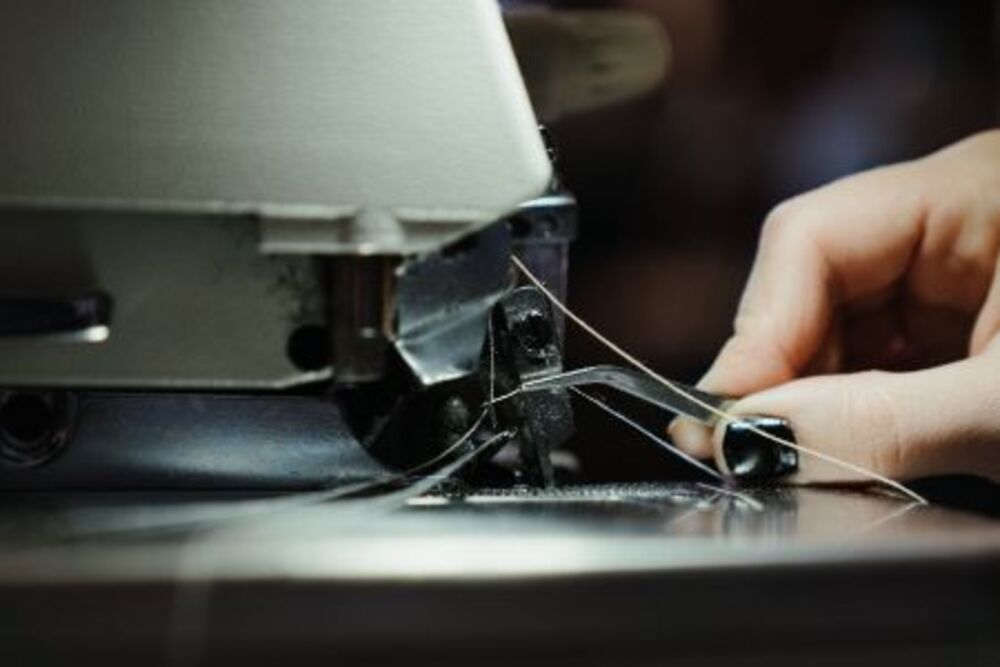There are many functions that a sewing machine can perform when you use it. These include the Needle bar, clamp, Stitch length regulator, as well as the Bobbin winder. We’ll be covering the basics of each component in this article. We’ll start by describing the basic functions and uses of a straight stitch.
Needle bar
The best sewing embroidery machine for beginners include a needle bar to sew a piece of fabric. The needle bar is a piece of mechanical equipment that moves the thread along a needle plate to sew the workcloth. The needle bar is attached by a balance to the main shaft of the sewing machine. This balance works in conjunction with the needle to sew work cloth.
A needle bar is a feature of sewing machines that can be adjusted to reduce vibration. To adjust the bar, measure the distance between the needle plate and the inner hook, and then multiply the distance by the thickness of the work cloth. The needle bar can be adjusted to between 20-25 mm.
The needle bar’s thread guides can be either up or down. The thread guide allows you to limit the movement of the needle bar while sewing. It is important to avoid the thread from getting caught in the needle and making the sewing operation unstable. If the thread spool doesn’t move in the needle bar, thread breakage is likely to occur.
The clamp is another important component of the needle bar. The clamp holds the needle in its place. The clamp has two parts, the clamp body and the clamp screw. The clamp body wraps around your needle bar and the clamp screws tightens it to ensure that the needle is properly placed. It is useful for changing the thread mid-sewing.
The needle bar is located above the presser foot and sits in the sewing machine. A long needle bar is better for sewing through thicker fabrics. A longer stroke means that the sewing machine will work better. Protective gloves and eye protection are recommended when you use the needle bar.
The thread guide is located on the lower end of the needle bar. It has a fall-off-preventing member at the opening to stop the needle thread falling off the needle bar.
Needle clamp
Several sewing machines feature a needle clamp, which is used to secure the needle to the sewing machine. A small screw holds the clamp in place. To change a needle, loosen the screw and pull out the old needle. To release the clamp, a flat portion of your needle must be pulled out from the back. The needle should be pushed through the upper thread system to thread the machine. Some machines have a button or hand wheel to raise and lower the needle.
A no-loss needle clamp is another type. It’s made of synthetic plastic resin and extends to nearly the entire length of the needle bar. This prevents needles slipping out of the needle clamp during sewing sessions, which increases operator safety. A no-loss assembly also allows for easier manipulation.
A needle clamp is a collar or screw that holds the needle on a sewing machine. It is an essential part of sewing machines, as it keeps the needle securely in place while sewing. It also features a take-up lever that can be moved up or down to adjust thread tension. The fabric clamp grips the fabric between the top counter and the feed dog, applying downward pressure while sewing.
The needle bar is a cylindrical-shaped structure that holds the needle. It should be properly seated in the needle clamp before being tightened. The needle should match the fabric, and the length and depth of the thread groove in the front are also important factors. If the needle bar is not seated correctly, it can easily break. The needle clamp should be kept in a tight position to prevent damage.
The thread guide and thread cutter are another essential part of a sewing machine. These parts hold the thread in place while sewing and prevent it from sliding down into the sewing machine. They also keep heat and friction at bay by holding the metal parts of your Sewing Master Machine together. These parts are often worn out after long-term use.
Stitch length regulator
The Stitch Length Regulator on a sewing machine allows you to control the width of the stitch that will be created on the fabric. There are four parts to the Stitch Length Regulator. Each part handles a different function. The first part moves up and down to feed the thread to the needle. The second part moves up/down to tighten the loop created by the shuttle. The last part is the face cover, which covers the light and the inside workings of the machine.
The Stitch Length Regulator is an advanced feature of the modern sewing machine. This computer-controlled feature detects the movement of fabric under the machine’s feet and adjusts the speed to match. With this feature, you can regulate the length of your stitches anywhere from one to four millimeters. The length of the stitch will vary depending on the shape of your fabric and the thickness of the thread. If you are working with delicate designs, a shorter stitch length is preferred, while a longer one is appropriate for wide open quilting patterns.
The pressure dial is another component of a modern sewing machine. It controls the tension of the thread. A higher number means more tension, and a lower number means that there is less. Older models don’t have numbers but you can dial the dial to determine the tension. The upper and lower tensions must be balanced to create a secure stitch.
The stitch length regulator functions of a sewing machine are not your first thought when sewing. If you’re looking for a new machine, make sure it has a sophisticated stitch length regulator. The difference between a regular manual sewing machine and a modern computerized machine is the amount of fabric pulled through each stitch. Some machines have a predetermined stitch length in millimeters while others allow you to choose from stitches per inch.
The Stitch Length Regulator regulates the amount of pressure applied to the fabric as the needle passes through the fabric. In addition, the speed regulator controls the amount of thread that passes through the needle. In addition, the speed regulates the amount of thread that passes through the needle during stitch formation, loosening the highest thread to lock the stitch.
Bobbin winder
A bobbin winder is a small device that automatically winds your bobbins. This will allow you to spend more time sewing. It winds bobbins quickly, evenly, and shuts off automatically when it is full. It is imported and uses two AA batteries.
The bobbin winder can be used quickly. To begin, place the thread on a spool pin. You may also need to put a spool cap over the thread spool. Then, thread the bobbin using the thread guide. Once you are done, you can take the bobbin from the bobbin winder.
When you use a bobbin winder, the spool pin is located on top of the machine. When winding a bobbin, wrap the thread around the pin twice to fill it evenly. If the filling is uneven, you have placed the thread wrongly. Then, wrap the thread once more.
There are many types of bobbin windsers. Select a bobbin winder that matches the type of thread on your sewing machine. Some models include a chart that will help you determine which one will fit your particular bobbin. If you are using a Janome sewing machine, choose the red spindle. If you are using a machine from a different brand, you can use green, yellow, and blue spindles.
A bobbin winder is an important piece of sewing machinery. It winds the thread on the bobbin and can be found on nearly all models of sewing machines. Some models have a freestanding Bobbin Winder. A bobbin winder can help you achieve uniform tension for your thread.
The bobbin twister is a useful tool for home sewers. It can save you time and effort by winding the bobbins without having to unthread your machine. You may find it comes with thread cutters or guides for a faster and more hassle-free way to wind the bobbins. You can buy one online or at your local sewing shop.
You can wind multiple colors of thread with a bobbin winder. The bobbin winder will stop spinning automatically when it is full. You can also wind a different color of thread on the same bobbin and replace it with a new one. If you are unfamiliar with the way a bobbin winder works, you can use a small flashlight to see under the pin and remove it.








